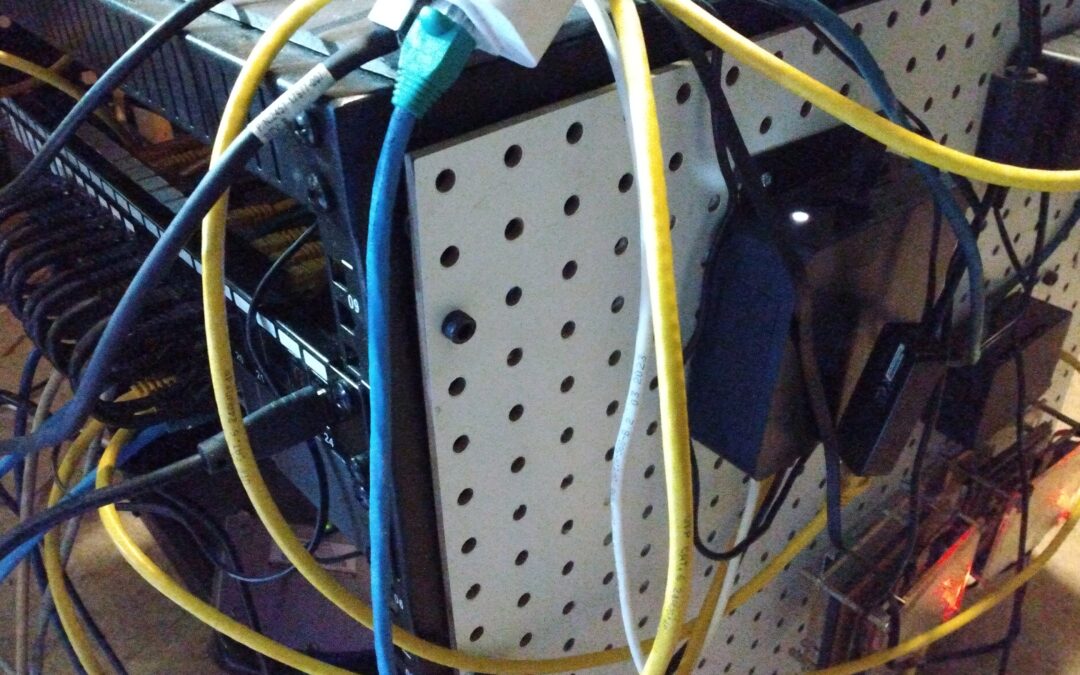Kubernetes, denoted K8s, is on my short list of things to build in my homelab. I am currently running Proxmox and could build K8s from 4 virtual machines but I want the real thing! A proper build for K8s in a homelab requires 4 machines, choosing the hardware is a challenge as I want price & performance but I also need energy efficient machines that won’t trip my circuit breaker. For the past year I have been excited about the development of the Turing Pi 2, a small mini-itx motherboard that is populated with up to 4 Arm64 based SoC compute modules such as the Raspberry Pi 4 CM, Nvidia Jetson CM, & the Rockchip RK3588 CM. Total power consumption is less than 80W. As interesting as this product is it is still quite expensive and the library of Arm64 containers is no where near the plethora of containers available for Amd64 (Intel) containers.
The Mini PC to the rescue!
The old, clunky, desktop PC has been reduced to a mere 12.6cm x 11.3cm x 4.2cm. These are the dimensions of the TRIGKEY Speed S5 5700U Mini PC Ryzen 7 W11 Pro Desktop. This little machine is powered by an AMD Ryzen 5700U CPU with 8 cores and 16 hyperthreads, the model I have linked has 32GB RAM and 500GB of NVMe Gen3 SSD. Can you believe that this Mini PC only sips 15W of electrical power! To be specific, the AMD 5700U power consumption is stated to be:
Typical TDP: 15 W
TDP Down: 10 W
TDP Up: 25 W
So, I need 4 machines to build a K8s cluster and 4 Trigkey Speed S5’s will consume, on average, 60W of power as compared to the Turing Pi 2 consumption of 80W. Choosing the AMD64 architecture over the Arm64 architecture also enables the possibility of creating a “Hybrid Cloud” configuration which means that I can rent widely available AMD64 Virtual Machines in the Cloud from such Cloud providers as DigitalOcean and Vultr and configure these Cloud VMs with K8s and integrate these Cloud K8s platform to my Homelab K8s. Creating a similar Hybrid Cloud with the Arm64 architecture would be a significant challenge as there are few Cloud providers that offer Arm64 virtual machines and, to my knowledge, there isn’t any availability of Arm64 in the Cloud here in Canada.
Tomorrow is Black Friday and the price has been steadily dropping for the Trigkey Speed S5’s although prices have been fluctuating in the past week.
The best price I’ve found for the 32GB model is $350 last week and $390 today.
The best price I’ve found for the 16GB model is $320 last week and $350 today.
It is worth mentioning that Mini PCs based upon the 12th Gen Intel n100 are quite appealing. The N100 is about slightly more than a third of the performance of the Ryzen 5700U but costs less, down to just above Cdn$200 now with 16GB RAM and 500GB SSD, as well as consumes even less power with a Typical TDP of 6 W.
I own a Trigkey n100 Mini PC and am quite pleased with it. My N100 model includes dual 2.5Gbps network ports which I need for my new Bell Fibe 1.5Gbps down/1.0Gbps up Internet connection. On this n100, I run Proxmox virtualization OS and run OpenWRT as a soft router in a container. Performance of this machine is very impressive! The Intel n100 is a 12th Gen CPU and the 12th Gen Intel CPUs clocks in a healthy 16 percent advantage over the 11th Gen chips.
A K8s cluster built upon 4 Trigkey n100 MiniPCs with 16GB RAM each would be cost about Cdn$860 and achieve a sum total Passmark of 22476.
A Turing Pi 2 populated with 4 Raspberry Pi SoCs with 8GB RAM each would cost over Cdn$850 and achieve a total Passmark of 3808.
A Turing Pi 2 populated with 4 Rockchip RK3588 SoCs with 16GB RAM each would cost over Cdn$1370 and achieve a total Passmark of 16664.
My homelab analysis indicates that an AMD64 based K8s cluster is by far the most cost effective, performant, and also competitive with power consumption to Arm64 based platforms.
FYI: Trigkey MiniPCs come with a VESA mounting adapter which enables them to mount nicely to a pegboard!
This will be my last article until after Black Friday! <grin>

Here is a pic of my n100 Trigkey MiniPC mounted via it’s VESA mounting plate to the pegboard mounted to the side of my open frame 9U server rack on casters.
Pegboard hole spacing is an exact match for the VESA standard!
In this pic is also two Raspberry Pi 3B+‘s and two circa 2014 CubieTrucks.
I chose a 9U rack on casters because it fits perfectly under my desk.
